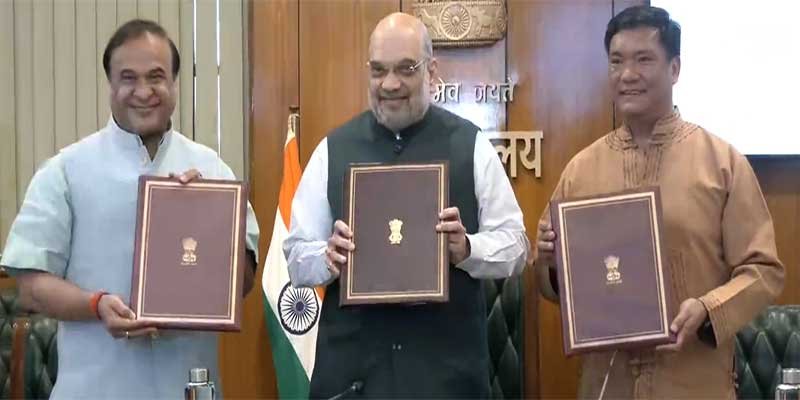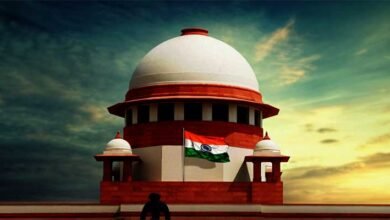Assam and Arunachal Pradesh Sign Agreement To Settle Boundary Dispute
Assam and Arunachal Pradesh governments have signed an agreement for the settlement of an inter-state boundary dispute in the presence of Home Minister Amit Shah in Delhi,

NEW DELHI- Assam and Arunachal Pradesh governments have signed an agreement for the settlement of an inter-state boundary dispute in the presence of Home Minister Amit Shah in Delhi, news agency ANI reported.
A Memorandum of Understanding (MoU) was signed by Assam Chief Minister Himanta Biswa Sarma and his Arunachal Pradesh counterpart Pema Khandu.
“The signing of an agreement for the settlement of an inter-state boundary dispute between Assam and Arunachal Pradesh is a very big achievement. Today, we have crossed the milestone for the establishment of a developed, peaceful and conflict-free northeast,” Union Minister Amit Shah said.
Assam shares an 804 km long boundary with Arunachal Pradesh and the border dispute dates back to the colonial era.
Over the years, the issue had intensified as allegations of residents of one state encroaching on land on the other have led to disputes and violence.
Know about the decades-old border dispute
The Assam – Arunachal Pradesh border dispute dates back to colonial times. In 1873, the British announced the “inner line” regulation, which demarcated an imaginary boundary between plains and the frontier hills, later designated as the Northeast Frontier Tracts in 1915.
The area of the frontier hills makes up present-day Arunachal Pradesh, which was earlier a part of Assam. The Assam government assumed jurisdiction over the North East Frontier Tracts after Independence, which became the North East Frontier Agency (NEFA) in 1954. The Union Territory (UT) of Arunachal Pradesh was formed in 1972 and it gained statehood in 1987.
The two states share a boundary of roughly 800 km and frequent flashes of the dispute have been reported along the border since the 1990s.
The root of the dispute is often said to be a 1951 report of a committee headed by then Assam chief minister Gopinath Bordoloi.
In the report, it was suggested that about 3,648 sqkm of the “plain” area of Balipara and Sadiya foothills was transferred from the NEFA (now Arunachal Pradesh) to Lakhimpur and Darrang districts of Assam.
However, Arunachal Pradesh has long held that the transfer was done without the consultation of its people and the state still held customary rights over these lands. Assam, on the other hand, believed that the 1951 notification was constitutional and legal.
The dispute came to the fore when Arunachal Pradesh became a UT in 1972 and till 1974 several efforts were made to demarcate the boundary.
A special tripartite committee was formed in 1979, to demarcate the boundary based on Survey of India maps. By 1983-84 about 489 km out of the 800 km was demarcated.
Further demarcation was stalled as Arunachal Pradesh did not accept the recommendations and claimed a major part of the 3,648 sqkm, which was transferred as per the 1951 notification.
In 1989 the state of Assam filed a case in the Supreme Court alleging “encroachment” of its lands by Arunachal Pradesh.
In 2006, the apex court constituted a local boundary commission helmed by a retired SC judge.
In 2014, the local commission submitted its report in which it suggested some of the lands be given back to Arunachal Pradesh and several other recommendations was made.
It was suggested that both states should come to a consensus, but nothing further happened, according to an Indian Express report.
Several intermittent clashes have been reported between the people of the two states in the disputed area, ever since the issue began.
PM, Home Minister step in
However, in 2021, following the insistence of both Prime Minister Narendra Modi and Union Home Minister Amit Shah, the two neighbouring states agreed to work and resolve their border dispute out of court.
Last year, both states signed the Namsai Declaration, in which they agreed to reduce the number of disputed villages to 86 from 123.
A total of 12 committees, each headed by a cabinet minister, were formed to visit the disputed areas and take feedback from residents. The committee submitted its report based on which the decision to sign the MoU was taken by the Assam government.









